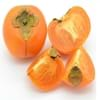Health Benefits
Cancer prevention, Cures gastro-intestinal troubles, Heart care, Increase in haemoglobin, Prevents diabetes
Cancer prevention, Heart care, Prevents macular degeneration, Reduces blood circulation problems
General Benefits
Anti-inflammatory properties, Boosts immune system, Digestive aid, Eye care, Flu treatment, Helps in weight loss, Maintains healthy cholesterol level, Treatment of common cold
Anti-inflammatory properties, Controls blood sugar levels, Digestive aid, Eye care, Helps in weight loss
Skin Benefits
Anti-aging benefits, Brightens and lightens complexion, Reduces wrinkles, Skin revitalization, Treatment of dark spots
Anti-aging benefits, Brightens and lightens complexion
Hair Benefits
Prevents hair loss, Promotes longer and healthier hair, Protects hair, Remedy for split ends, Treatment of dandruff
Acts as moisturizer, Regulates hair growth, Shiny hair
Allergy Symptoms
Abdominal pains, Anaphylaxis, Vomiting
Breathing difficulty, Eczema, Hives, Itching, Nasal congestion, Runny nose, Sneezing, Watery eyes, Wheezing
Side Effects
Allergic reaction
Allergic reaction
Best Time to Eat
As a snack in the late afternoon, Eat the fresh ones, avoid mixing with any other foods, don't eat after meal., Morning time (before lunch)
Best if taken as a breakfast (or empty stomach), As a snack in the late afternoon, Don't eat after meal, Morning time (before lunch)
Vitamin B5 (Pantothenic Acid)
Vitamin C (Ascorbic Acid)
Vitamin K (Phyllochinone)
Phytosterol
Not Available
Calories in Fresh Fruit with Peel
Calories in Fresh Fruit without Peel
Not Available
Not Available
Varieties
Victoria, President, Czar, Ariel, Avalon and Oullins Gage
Amity, August Red, Boyne, Canby, Caroline, Comet, Dinkum, Dorman Red, Latham, Meeker, Black Hawk, Hayda, Lauren, Meeker and Latham
Color
Pink, Purple, Red
Black, Purple, Red, Yellow
Taste
Juicy, Sweet, Tart
Sweet
Origin
Caucasus
Europe, North Asia
Soil Type
Clay, Loam, Sandy loam
Sandy loam
Climatic Conditions
Cold
Cold
Facts about
- In china, plums are used for production of wine.
- A chemical called amygdalin found in plum seeds, turns into toxic compound in human body.
- Plum tree produces fruit 3-5 yrs after planting.
- There are more than 200 varieties of raspberries.
- In USA, 90% of the raspberries are grown in Washington, California and Oregon.
- They do not ripe after they are picked.
- A raspberry contain 100 to 120 seeds.
Top Producer
China
Russia
Other Countries
Bosnia, Chile, India, Iran, Italy, Romania, Serbia, Turkey, United States of America
Azerbaijan, Canada, Mexico, Poland, Serbia, Spain, Ukraine, United Kingdom, United States of America
Top Importer
United Kingdom
United States of America
Top Exporter
Chile
Poland
Botanical Name
Prunus domestica
Rubus Idaeus
Synonym
Not Available
Not Available
Subkingdom
Tracheobionta
Tracheobionta
Division
Magnoliophyta
Magnoliophyta
Class
Magnoliopsida
Magnoliopsida
Species
P. domestica
R. idaeus
Compare Plum and Raspberry
It is important compare Plum and Raspberry as both the fruits have a different nutritional value. Their comparison can be done on the basis of their vitamin and mineral content, calories, benefits as well as characteristics, making it easier for us to choose the best fruit for our diet. Their general health benefits are as follows:
Plum Benefits: anti-inflammatory properties, boosts immune system, digestive aid, eye care, flu treatment, helps in weight loss, maintains healthy cholesterol level and treatment of common cold.
Raspberry Benefits: anti-inflammatory properties, controls blood sugar levels, digestive aid, eye care and helps in weight loss.
Fruits are also used as a remedy for various hair problems. The hair benefits of Plum are: prevents hair loss, promotes longer and healthier hair, protects hair, remedy for split ends and treatment of dandruff and hair benefits of Raspberry are: acts as moisturizer, regulates hair growth and shiny hair. Some fruits are known to cause allergic reactions. The allergy symptoms of first fruit are: abdominal pains, anaphylaxis and vomiting and the symptoms of second fruit are: breathing difficulty, eczema, hives, itching, nasal congestion, runny nose, sneezing, watery eyes and wheezing. Get sorted Plum vs Raspberry comparison with the help of fruit comparison tool by fruitvs.com.









